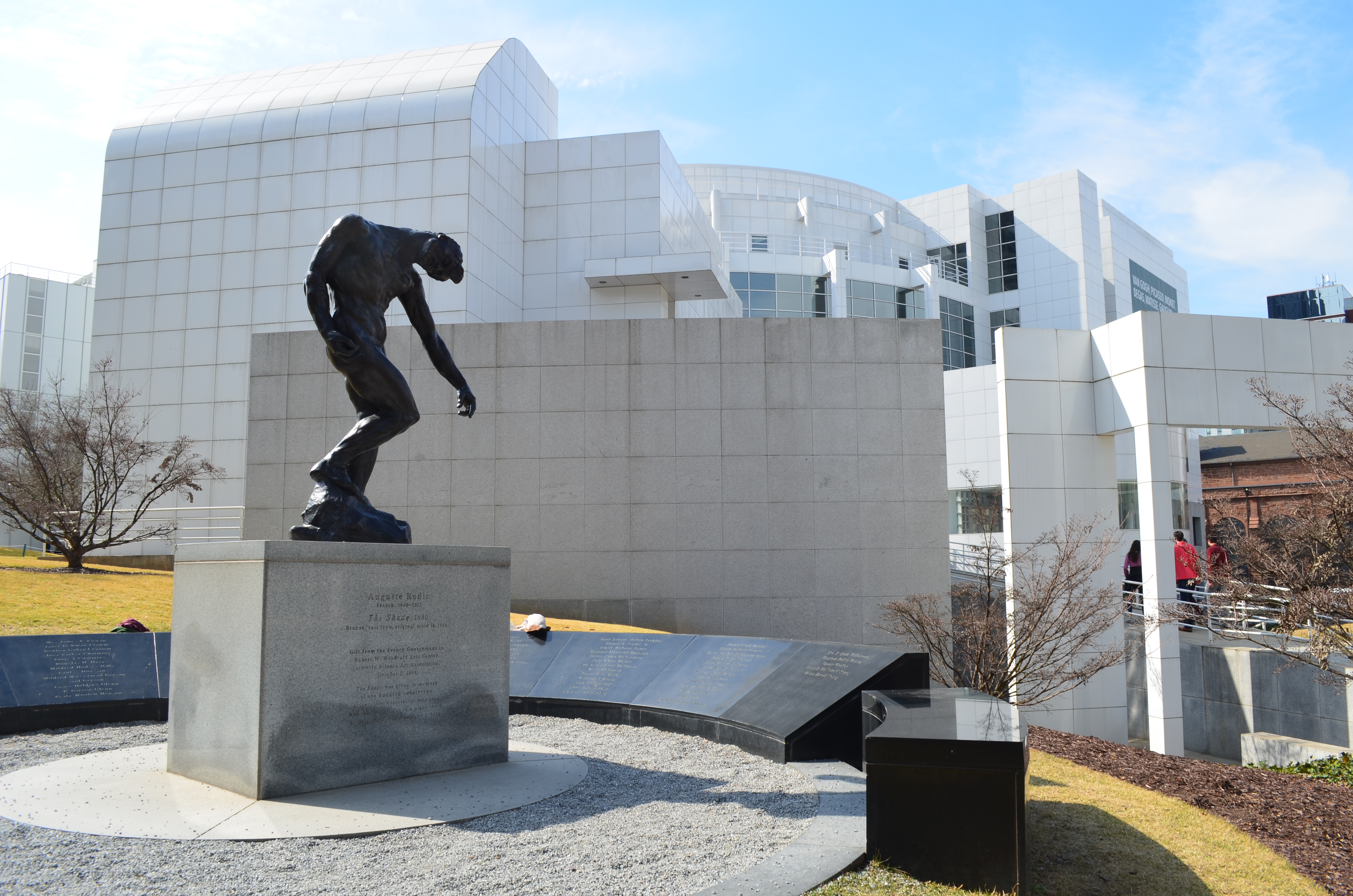From it’s humble beginnings in 1905, the Atlanta Art Association sought to bring visual art to Atlanta. Renamed the High Museum in 1926, the museum moved into the into the Woodruff Arts Center (formerly called Memorial Arts Building) in 1968, sharing space with the Atlanta Symphony Orchestra and Alliance Theater.
By the early 1980’s, the museum raised enough funds for Richard Meier to build the iconic 4-story, 135,000 square, post-modern building adjacent to the Woodruff Arts Center. Then in 2005, architect Renzo Piano doubled the space by adding three cube-shaped buildings to the museum complex.
Visitors now enter the museum through the Wieland Pavillion. The 85-foot tall lobby also houses a cafe, covered terrace and a gift shop. The original Richard Meier building, (renamed the Stent Family Wing), is accessed via two sky bridges.
European Masterworks: The Phillips Collection Exhibit
Heading to the top floor of the Wieland Pavillion, I wanted to see the special exhibit “European Masterworks: The Phillips Collection.”
When I interned in Washington, DC, the Phillips Collection near Dupont Circle, was one of my favorite art galleries. Located in the former Georgian Revival home of Duncan Phillips, the museum features many Impressionist paintings including one of my favorites – “Luncheon of the Boating Party” by Pierre-Auguste Renoir. I fondly remember attending a Sunday afternoon piano concert in the wood-paneled Music Room, which served as the owner’s library at one time.

This exhibition began with a brief history of Duncan Phillips, his family and how the collection grew over time. Considered to be the first modern art museum in the US, the museum was definitely ahead of its time.
As I moved from each room, I gazed at Impressionist and Post-Impressionist art by Monet, Degas, Cezanne, and Van Gogh. Although the exhibit featured 75 paintings and sculptures, it did not include Renoir’s “Luncheon of the Boating Party.”

The exhibit also featured Cubist and Abstact Expressionist art by Pablo Picasso and Wassily Kandinsky. One of the works that spoke to me was “The Artist’s Studio” by Raoul Dufy.
I read up about Dufy online and discovered he was a French Fauvist painter best known for using bold outlines filled with color. Later, he moved into textiles, designing Art Deco fabrics for Paris’s top couturiers including Paul Poiret.
Stent Family Wing
I walked across one of the sky bridges to the original Richard Meier building, now called the Stent Family Wing. From the window, I had a great view of Midtown Atlanta.
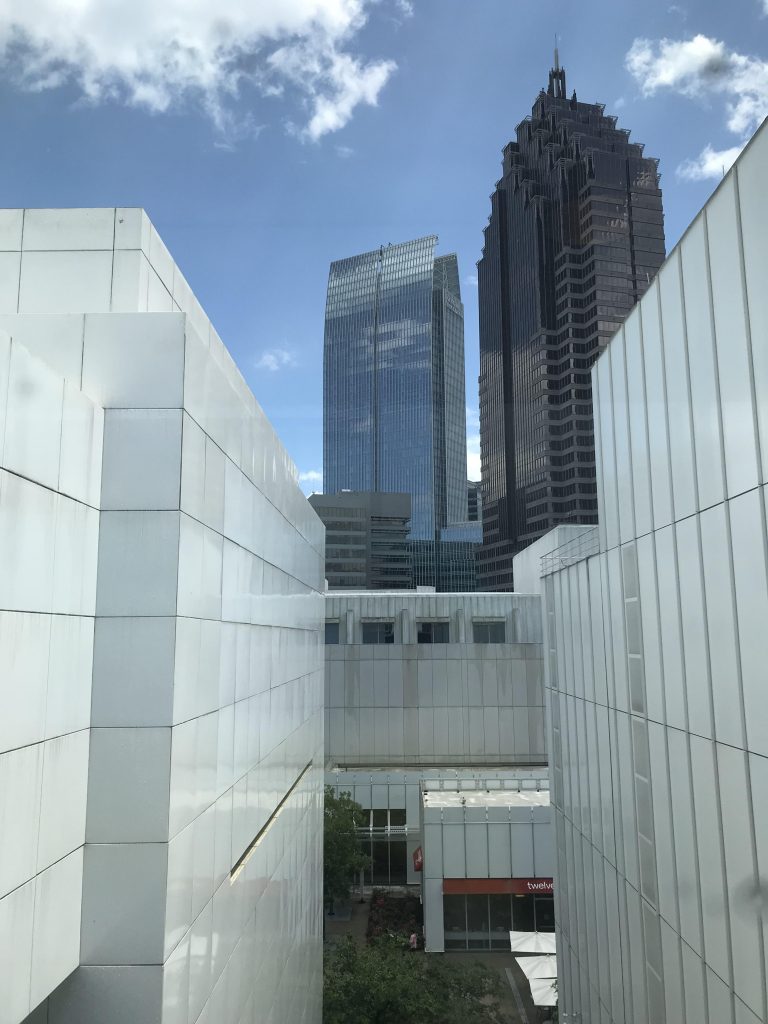
In the Stent Family Wing, I noticed less crowds. I remember when this was the only building and the 4-story atrium was the first thing visitors saw. Yet coming from the other direction (via the sky bridge) made more sense, allowing my eyes to follow Sol LeWitt’s “Wall Drawing #729 Irregular Color Bands” up to the skylights and back down the curved catwalks.
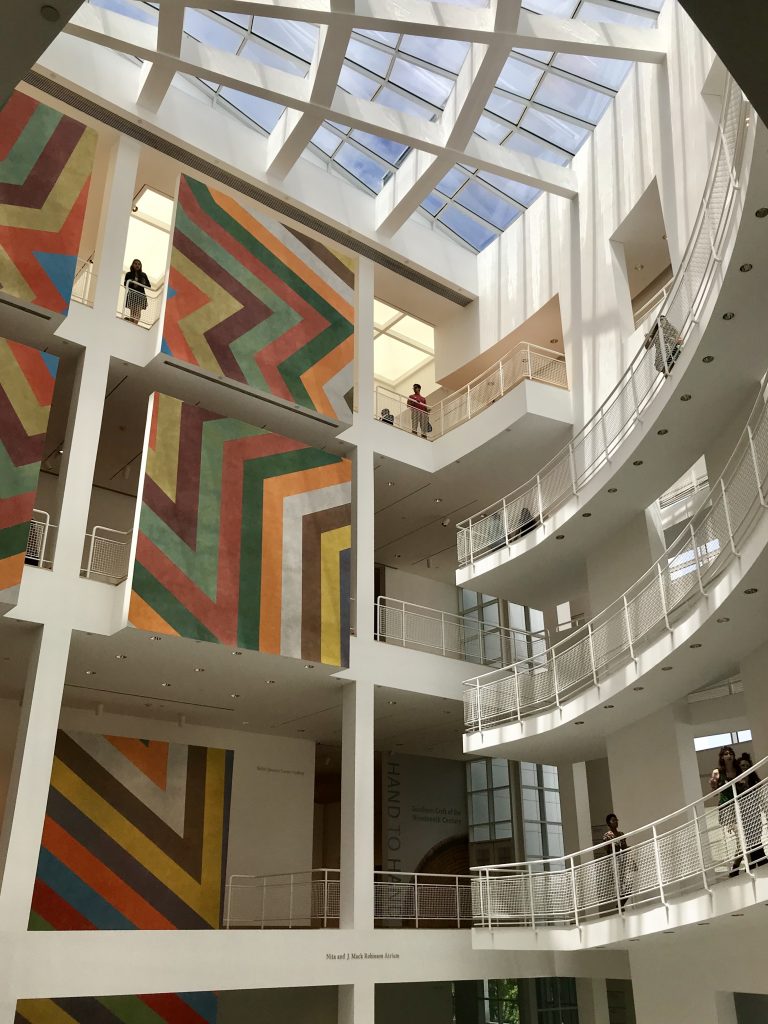
The High recently completed a $6 million reinstallation of their permanent collection; the first since the expansion in 2005. The placement of the art was more thought out, reflecting the building’s architectural features. On the second floor, I walked along a sculpture gallery that was perfect for showcasing the curved, glassed wall.
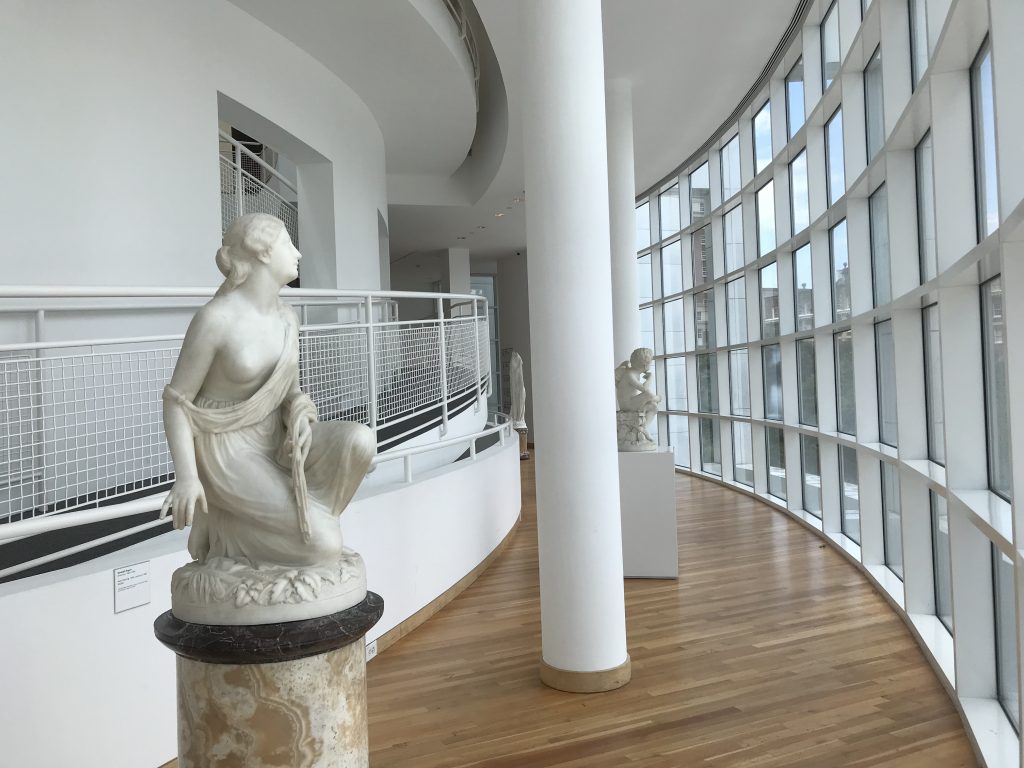
European Art
Of course I had to visit the European art gallery which includes paintings by Claude Monet, Camille Pissarro and Henri de Toulouse-Lautrec.
American Art
An artist I’ve always loved is Childe Hassam. The Bostonian spent several years studying in France and was best known for his flag series of paintings during WWI.

Folk and Self-Taught Art
It never fails. Every time I walk the catwalk to the 4th floor, I get a bit unsteady and scared of heights. However, this turned out to be my favorite part of the Stent Family Wing.
I enjoyed the bright colors and the stories told on some of the wood carvings – especially “Hallelujah Door” by New Orleans native Herbert Singleton and “Slavery Time” by Leroy Almon.
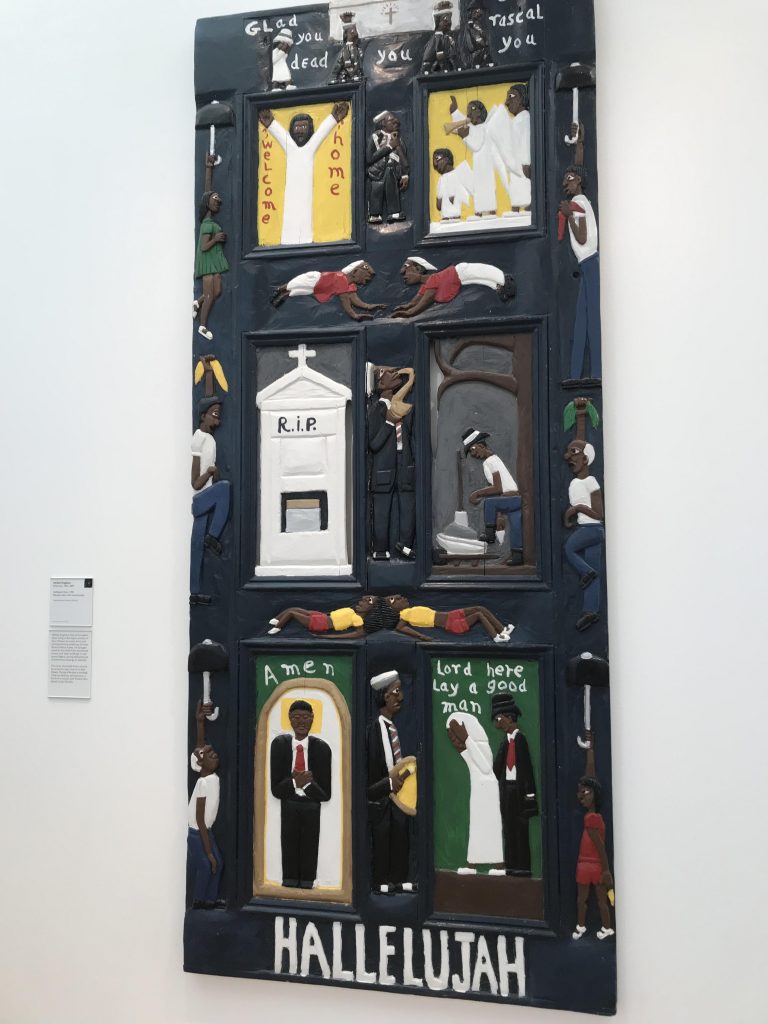
Several rooms were dedicated to Howard Finster, a Baptist preacher who spread the message through his folk art. In 1961, Finster created Paradise Garden in Summerville, Georgia where he showcased his work. Many Atlantans (including me) have heard of Finster, who died in 2001, but have never visited Paradise Garden which is still open for tours. I enjoyed seeing some of his works at the High and learning more about the eccentric man.
The Anne Cox Chambers Wing:
Built at the same time as the Wieland Pavillion, the Anne Cox Chambers Wind is a 3-story, traingle-shaped building. The top floor features Modern and Contemporary art while the lower two floors showcase traveling exhibits.
Modern and Contemporary Art
One of the most poignant artworks was the “The Fire Next Time” by Alfredo Jaar. Multiple black-rimmed boxes featuring black and white images from the Civil Rights Movement are stacked in a dizzying array reflecting the tumultuous times.

The Pursuit of Everything: Maira Kalman’s Books for Children
While my teens were younger, we read lots of picture books. How I’d never heard of Maira Kalman, I don’t know – but I sure missed out.
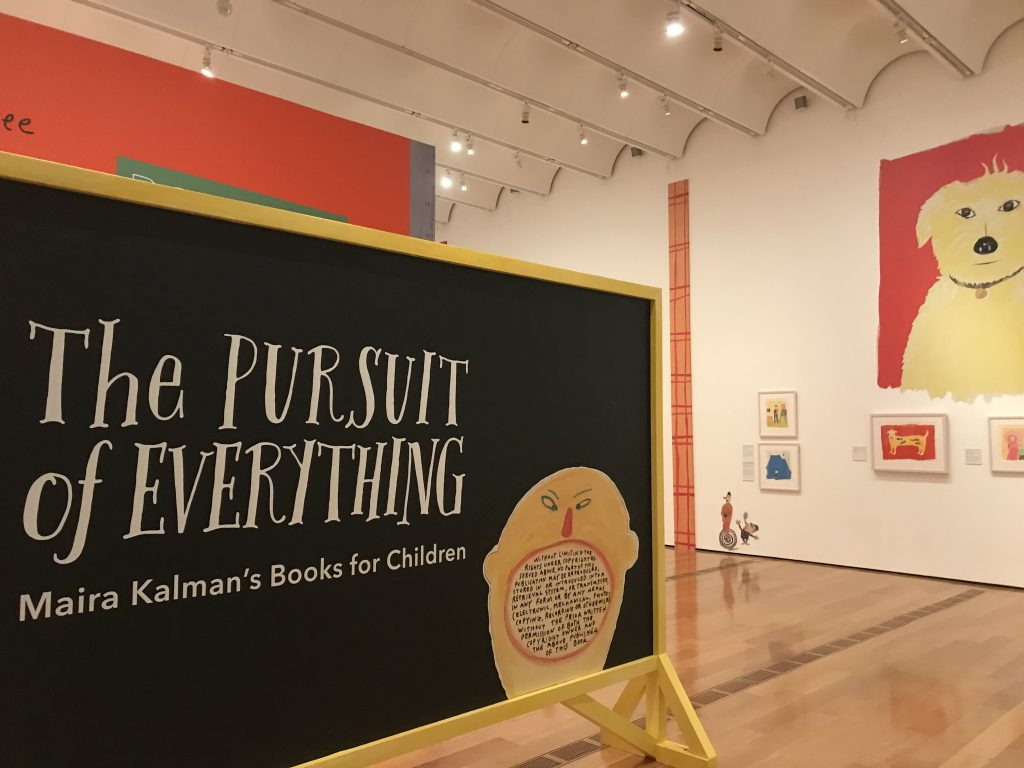
After spending a couple of hours in two wings of the museum, I was getting tired. However, the light, whimsical artwork by Maira Kalman perked me up considerably.
Born in Isreal, Kalman moved to the NYC as a young child and later met and married graphic designer Tibor Kalman. When Tibor Kalman designed the cover for a Talking Heads album in 1985, lead singer David Byrne asked Maira to illustrate a book based on the song, “Stay Up Late.” Since then, Kalman has written 18 children’s books.
Some of her books include “What Pete Ate” and “Max Makes a Million.” She’s not afraid to explore tough subjects. In “Fireboat – The Heroic Adventures of the John J. Harvey,” she beautifully illustrates and relays the events of 9/11. In 2018, she released “Bold & Brave – Ten Heroes Who Won Women the Right to Vote” dealing with the women’s suffrage movement.

Although I’d not read one her children’s books, I had seen Kalman’s work before. Her art graces the front covers of many New Yorker magazines. She’s also written several illustrated adult books including “The Pursuit of Everything” and “Sara Berman’s Closet.” Her newest book is “Cake: A Cookbook” with food writer Barbara Scott-Goodman.
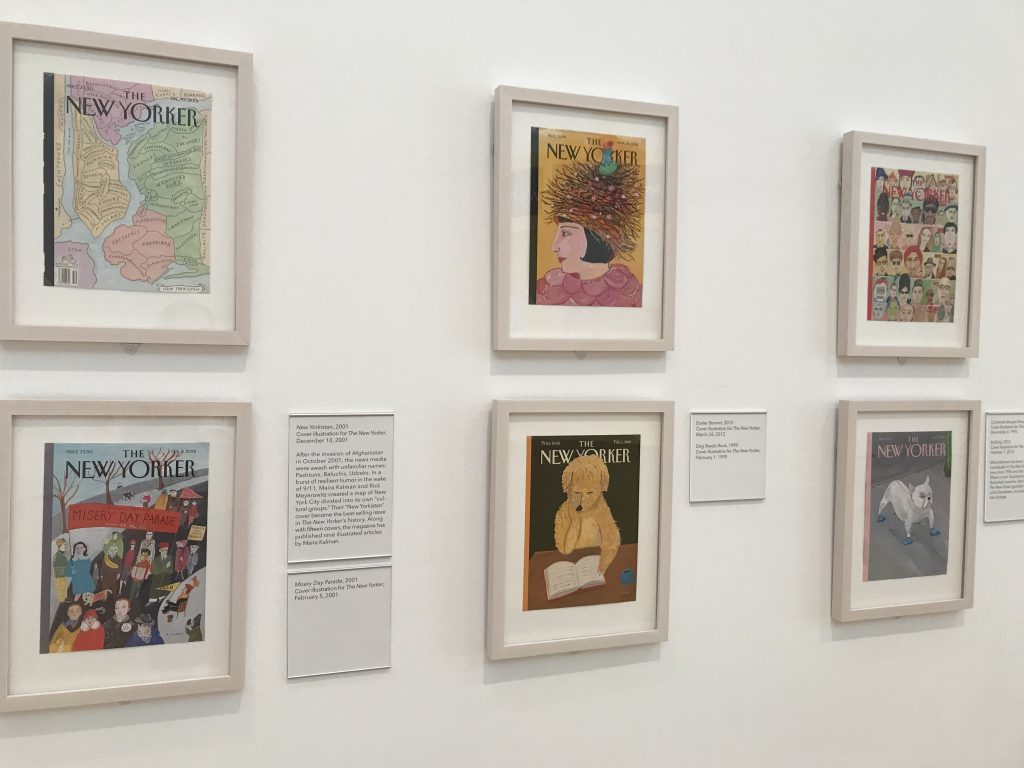
I love Kalman’s sense of humor. A video in the room dedicated to her book, “Next Stop Grand Central” shows her typical day. In it, she draws for a while and then says it’s time for a nap so she can dream. In time lapse, she naps and then gets up from the adjacent day bed. As she starts to draw at her desk, she says, “Oh, wait. I have one more dream.” She naps quickly and then hops back up working on her drawings.
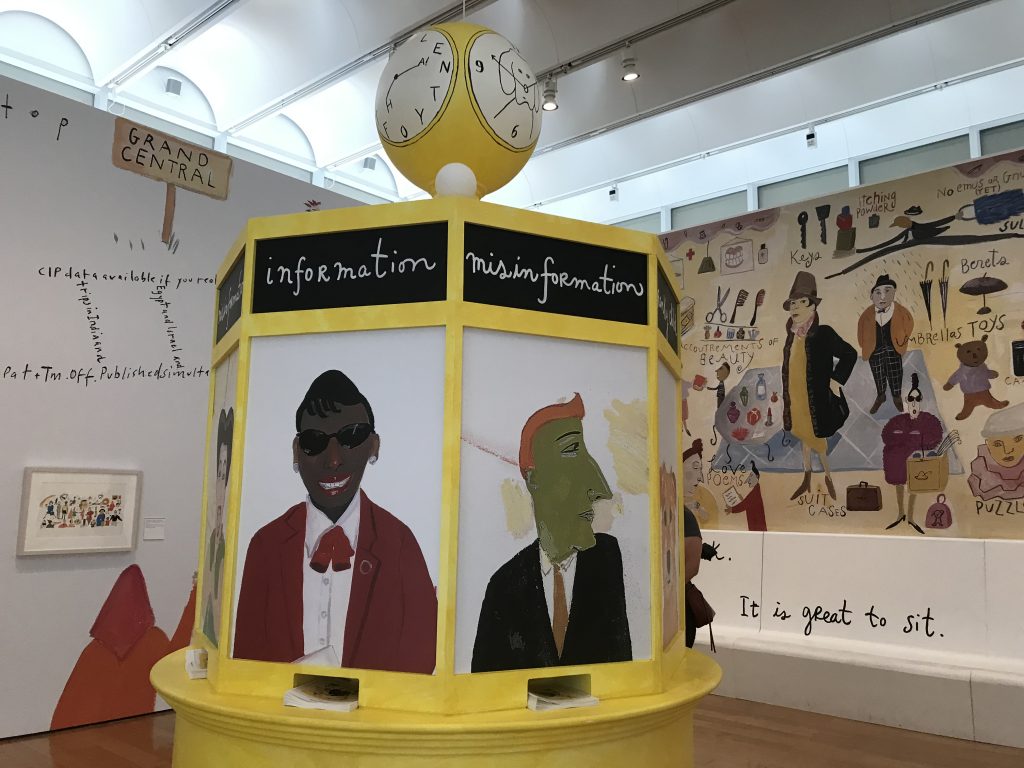
The Kalman exhibit put a smile on my face and was a delightful way to end my visit to the High Museum.
In Conclusion
Interestingly enough. the items on display at the High represent less than 10% of their total collection. I didn’t even have time to take in everything on display including the photograph, porcelain and decorative arts collections.
I’ve spent more time in the last few weeks reflecting and researching some of the various artists than I spent at the actual museum. And I’m also making plans to visit Finster’s Paradise Garden and reading some of Maira Kalman’s books. Isn’t that what art is supposed to do?
If so, then my visit to the High was most successful. For more information, click here for the High Museum of Art’s home page. To explore the High’s vast collection, including things not currently on display, click here.
